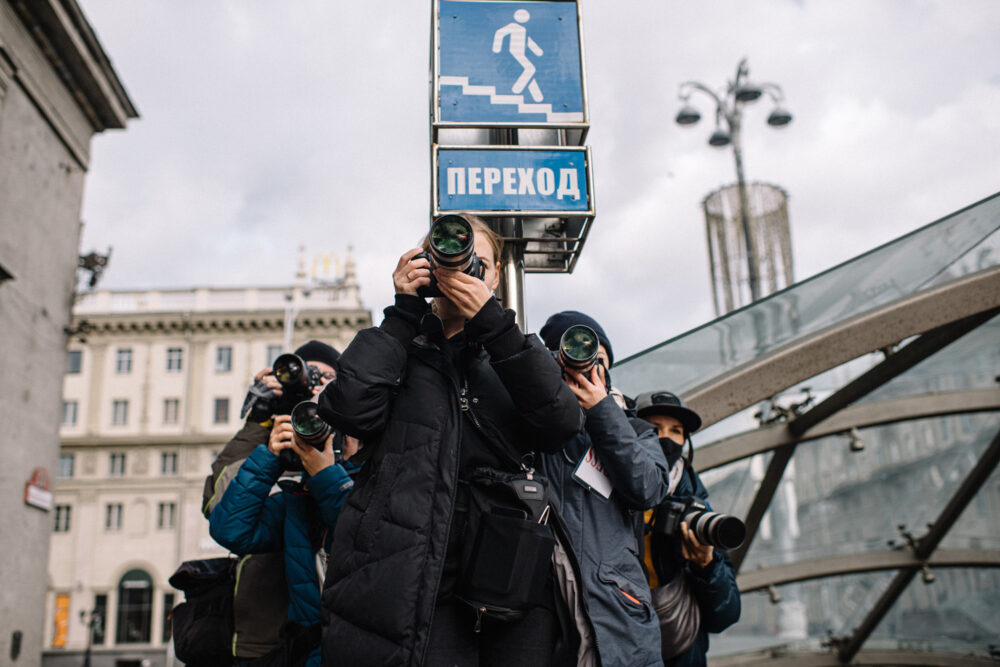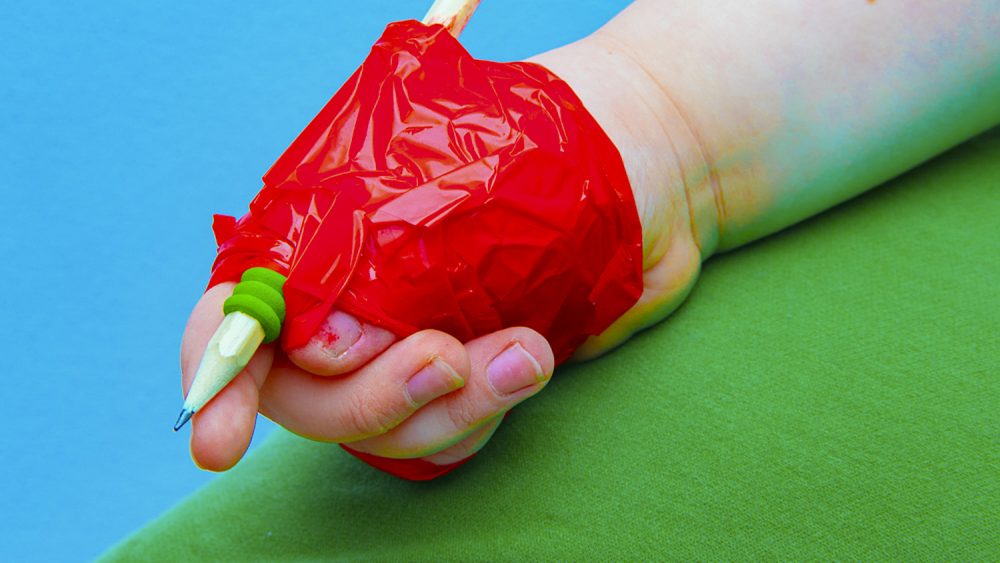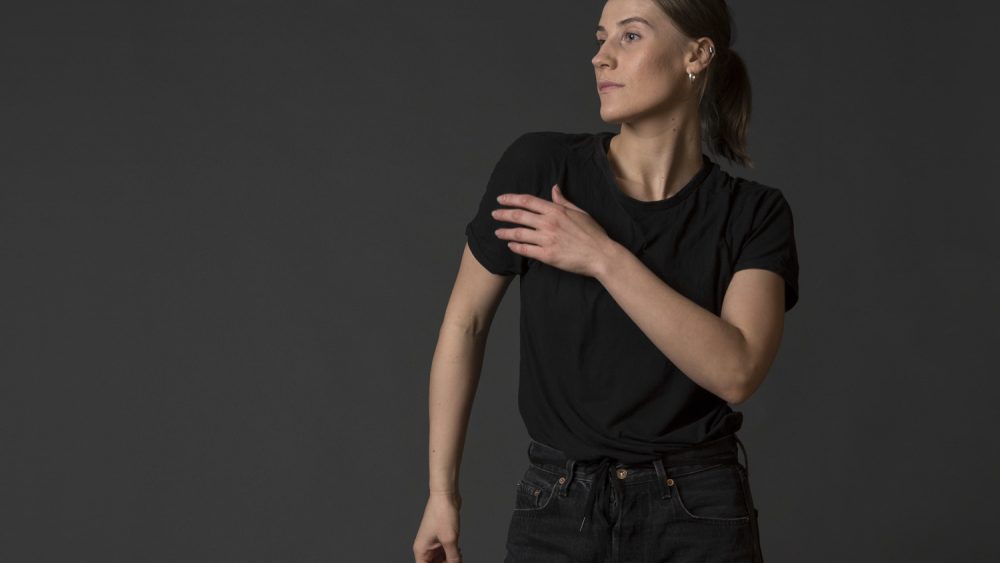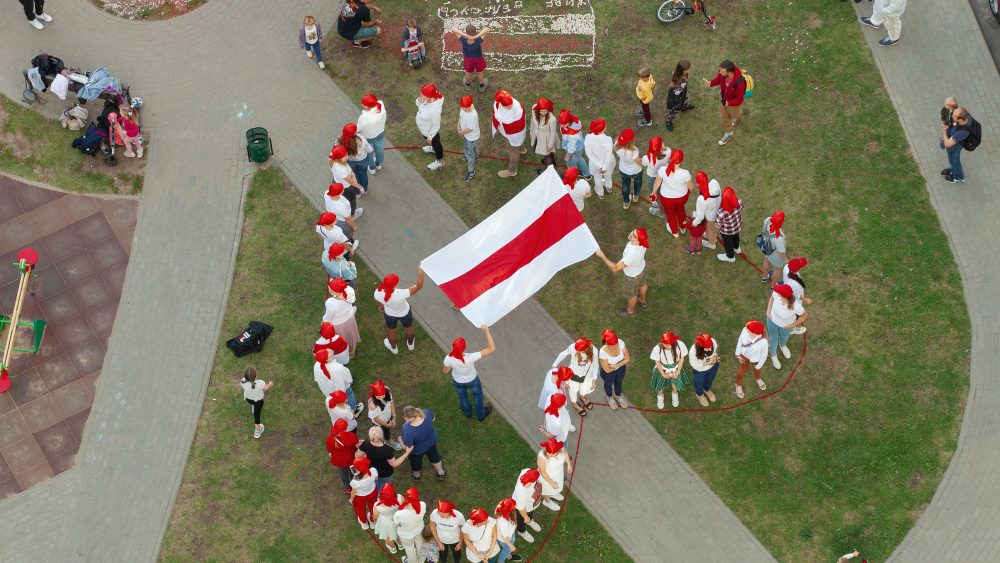“It’s all for the sake of an image”. How power destroys journalism in Belarus
Today, on 18 May, when I’m writing this text, the Belarusian authorities have blocked the most viewed media in the country – TUT.BY. Nearly a year ago, on 19 July, the security forces – siloviks – stopped the live broadcast of Радио Свабода journalist Aliaksandra Dynko, where long queues of people were shown. These people signed for alternative candidates for the presidential nomination. It was not the first case in Belarus, when a journalist was interrupted, but it was an indicator that the ruling power does not like an image that reveals reality and that it is scared of it.
The representatives of the authorities often said: “Everything was organised for the sake of an image”. By saying it, they mean the wave of protests against falsification in the presidential election in 2020 that was documented by independent observers. On 9 August, people walked into the streets to show their outrage. At the end of the day, no official election protocols were handed out in the polling stations. On the same day, the internet was disabled in the entire country and people faced the information vacuum.
The government of Belarus did not understand that in the age of visual media such as Instagram, Tik Tok, YouTube everything happens for the sake of an image. A new generation has grown up, and they think in visual images. For them, an image is as important as freedom. Therefore, the simplest thing that the authorities could do – to disable the internet during the protests.
For three days – from 9 to 11 August – the country was totally clueless in terms of what was going on. On 12 August, when the internet appeared again, people saw a huge stream of photo and video materials – evidence of violence against people. Throughout the country, more people went out in the streets to protest against the violence. And the ruling power understood that it was necessary to get rid of the images.
Injuries, beating, search warrants, court, imprisonment – this is the range of problems that a photo or video journalist faced and still can face. Any Belarusian journalist.
This text is my scream about how complicated, dangerous and even impossible it is for a journalist to work in Belarus in 2021. I will mention only a few facts about the repressions against the visual journalism from 2020 to 2021. And this list is not complete.
It is difficult to work. June – 8 August 2020
Everything started. Photographers, cameramen and other journalists were taken by force at the location, brought to the police stations, where their documents were checked. They were detained for a few hours and then released. It was done to impede the work of journalists, disrupt the live broadcasts, because if people got to know what was going on, they could join the protests. On that day – 19 June 2020 – photographers Iryna Arakhouskaya (Белсат) and Vadim Zamirovski (TUT.BY) were detained along with Aliaksandra Dynko and cameraman Andrei Rabchyuk from Радио Свабода.
In the solidarity campaign of the shop symbal.by the photographer Andrei Shauliuha (Радио Свабода) was detained. The shop sells goods with national symbols. The supporters stood in long queues in order to protest against the closing down of the shop. The photographer was detained for a few hours in the police station and then, without any police records, released.
Journalists realised that it is difficult and unpleasant to work, but it is possible. Everything changed on the night to 9 August, when the government lost its mind and carried out a three-day terror – disabled the internet, arrested hundreds and even thousands of people by locking them in overcrowded isolation cells, beating and torturing them.
It is dangerous to work. 9 – 11 August 2020
Belarus – a peaceful country; is not in warfare with any other country; there is no wartime journalism. But during these days in August photo journalists – the “ones working in the field”, found themselves in the war zone. Minsk, a city of each district was no longer a peace area. Journalists were buying armoured vests, helmets, masks and other protective equipment. No one knew what was going to happen and prepared for everything.
Over these three days, journalists were shot, beaten and police records were written up referring to the well-known Article 23.34 of the Administrative Code, as, for example, photographer Alexander Sajenko from Grodna. He was detained together with two colleagues and separately as journalists they were put in the special vehicle of the police forces.
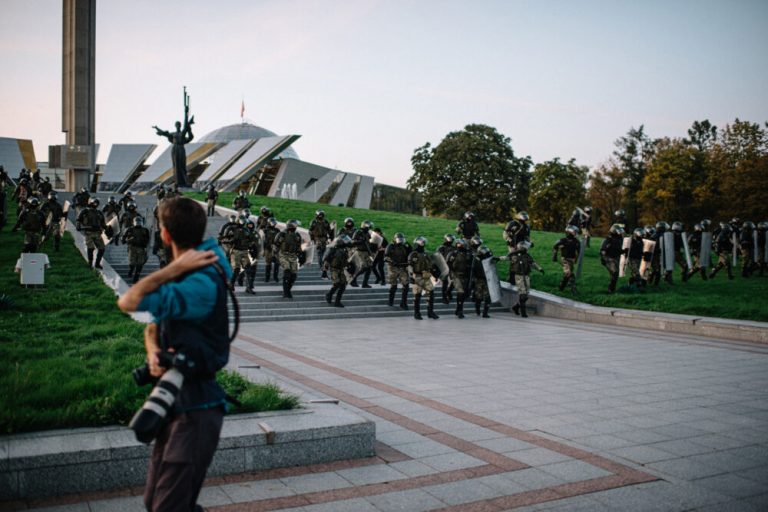
On the night from 9 to 10 August a lot of foreign journalists worked. The security forces were not stopped by badges or vests labelled “The Press”. AP correspondent Mstislav Chernov was battered and afterwards hospitalised.
Photojournalist Tatyana Kapitonava was knocked out by a grenade in the conflict between the security forces and protesters near the Pushkin Station in Minsk. The security forces shot Natalya Lubnevskaya with a rubber bullet. She spent 38 days at the hospital. The director Maxim Shved was detained during the filming of a documentary and beaten. His name was included in the police records and he was released only after 5 days.
On the next day, 11 August, the cleansing and hunting of journalists continued. One representative of the security forces smashed the camera of AP photographer Sergey Grits. Memory cards with images were seized from three photographers. The cameraman of TUT.BY Vsevolod Zarubin was battered, his camera was smashed and his flash drive was seized.
On the same day, photojournalist Iryna Arakhouskaya was injured with a rubber bullet. When security forces started to shoot at protesters on one of the streets of Minsk, Irina and her colleague tried to run away: “We ran down the streets, people yelled at the security forces from open windows: ‘What are you doing? These are journalists!’. We run and run, until they left us. I looked at myself: there was no blood. A rubber bullet went through a briefcase, only a small hole had remained. I was thoroughly dressed in several layers and it saved me from more serious consequences: I only got a huge hematoma. I was lucky.”
Iryna wrote an application to the Investigations Committee, but two months later a search was carried out at her mother’s place. Irina’s name was included in a criminal case. The lawyer was told: “For the time being, she is a witness.” Irina was forced to leave Belarus because working or simply staying in the country became dangerous.
The situation of these days was further complicated by the fact that it was not possible to supply materials to the publishing houses quickly, because the internet was disabled in the entire country. Connection was sought through additional means, in order to transmit the images.
So people with cameras thought that these days were the most difficult and dangerous in their lives. But at that time no one knew that it would become totally impossible to work just after a couple of months.
It is impossible to work. August 2020 to nowadays
In August, the ruling power changed the strategy. Prior to August 27 protests, more than 20 journalists were detained at once “in order to check the legitimacy of their professional activities”. This explanation was provided by the Press Secretary of the Ministry of Interiors Olga Chemodanova. When the protests were over, the journalists were released.
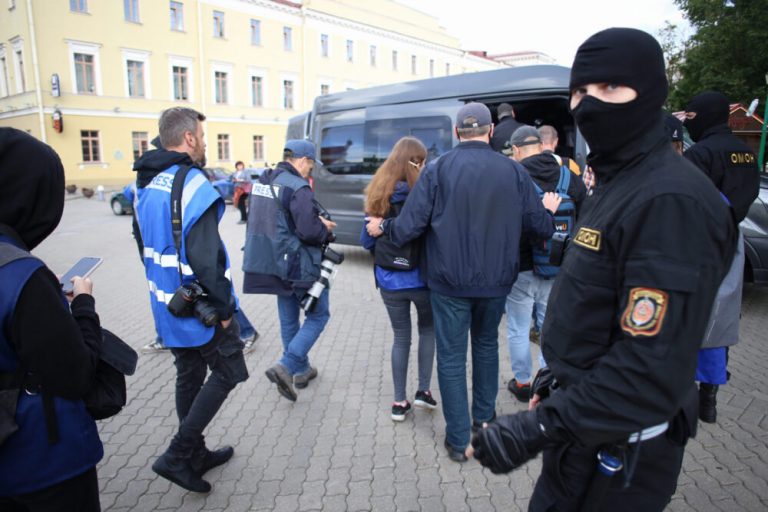
Since August, there is no rule of law in Belarus. You can be prosecuted according to the Administrative or Criminal Code, but you will not be granted justice at court.
During the initial phase – from September to November – journalists were detained and convicted of administrative misconduct; as if for participation in a protest, and sentenced to imprisonment from 7 to 15 days.
In a rather bizarre situation after another Sunday demonstration two photographers – Alexander Vasukovich (Белсат) and Uladz Hrydzin (Радио Свабода) were detained. They were sentenced to 11 days in imprisonment each.
When the photographers were released from the isolation cell, they were met by friends and colleagues. Security forces also arrived and detained the journalists of television channel Belsat, who were preparing the material on photographers.
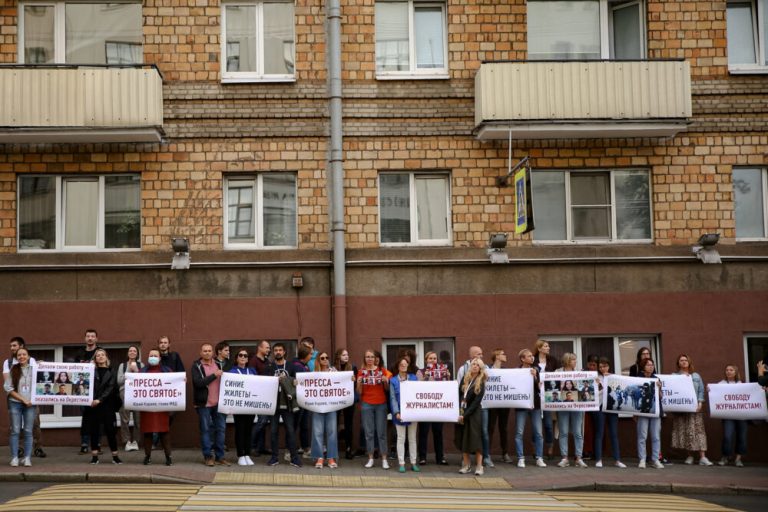
The turning point was 15 November. A special procession was planned at the time – people walked from the Alexander Taraikovskiy memorial, where he was killed over the first days of the protests, – to the second memorial, where another protester – Roman Bondarenko was killed. When security forces started to disperse people at the end of the route – in the Square of Change, two journalists streamed coverage online and got unlucky. The security forces noticed that live broadcasting on YouTube was taking place and found out from which apartment journalists Katerina Andreeva and Darya Chultsova were broadcasting. Both journalists were captured and imprisoned for 2 years. In the middle of Europe, journalists are imprisoned for doing their job.
Since recently, journalists have not been wearing blue vests labelled “The Press”, because they no longer protect. On the contrary, they have become the target of attacks. Any signs pointing to their profession are not being worn. In cold weather, photographers hid their equipment under their warm clothes. So the winter passed.
On 12 May 2021, Tatyana Kapitonava photographed an action of girls at the Central Market of Minsk. Without any labels that she is a journalist. On the next day, she was detained and sentenced to 10 days of imprisonment for administrative misconduct.
For any photojournalist any attempt to report can end with imprisonment. You don’t necessarily need to be detained at the location. Security forces can trace photojournalists using certain technical strategies and can detain them at any time and any place. Of course, journalists are continuously in stress that someone can come after them.
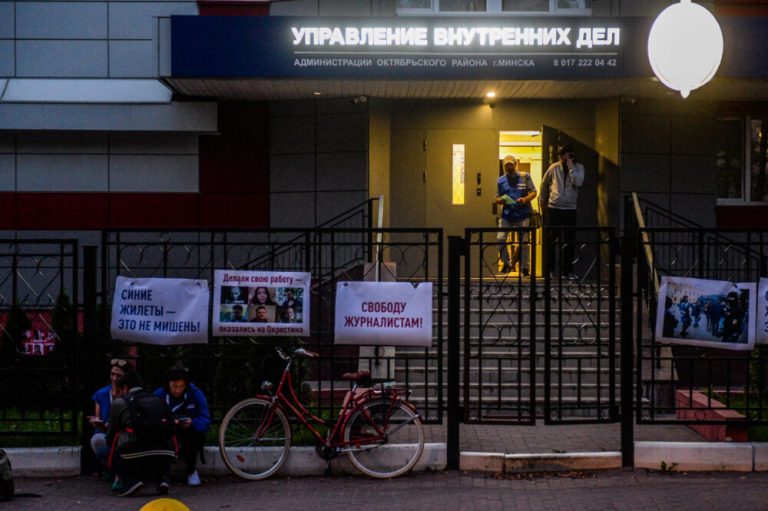
But it was not enough. Of course, previously too, the authorities had locked the mass media. But on 18 May the biggest media in the country – TUT.BY – was blocked. Currently it is known that 11 employees of the internet portal have been arrested, including the CEO Ludmila Chekina and editor-in-chief Marina Zolotova. Everyone received a sentence in a criminal case.
It seems, the ruling power achieved its goal – there are no images anymore. But it only seems so. Now, too, there are professionals who work and will continue working in any circumstances. They use other platforms. Journalism will not cease its existence in the country. It is impossible to block the flow of information in the 21st century. And the authorities have not understood it.
How to work from now on
Over a year, a journalist with a camera has become likened to a criminal. But only in the eyes of the authorities. At the same time, people started to trust the independent press more. During the peaceful demonstrations, the city residents let photojournalists inside their apartments in order to find a better angle for the frame. When the “hunting” of journalists began, people helped them to hide in their apartments. Solidarity campaigns with arrested and convicted journalists were organised. Photographs and video were sent to the publishing houses. The publishing houses knew that, if required, people will help them. Belarusians abroad established an aid fund for media employees.
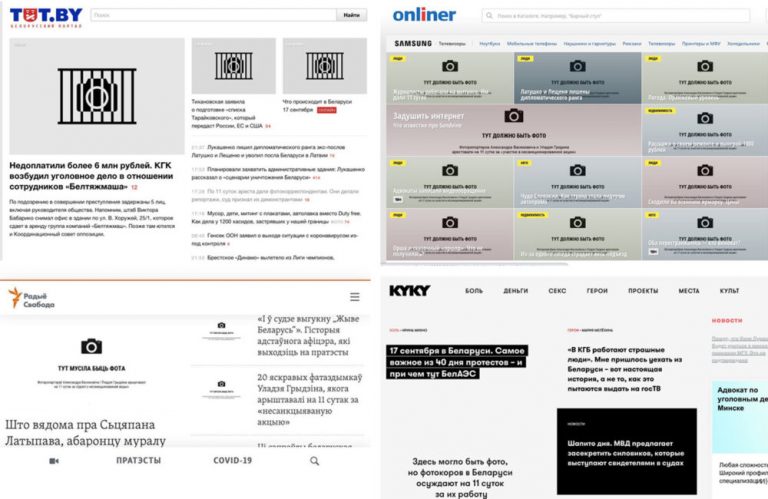
When there was a search at TUT.BY editor-in-chief Marina Zolotova’s place, she wrote in her column in Deutsche Welle: “There is no competition [among journalists] – everybody is ready to help, work on duty at the police station or isolation cell, collect contributions for the imprisoned colleague. We feel the support of our audiences.” That’s how it is. All independent journalists – one big collective. All independent media – one big publishing house.
When the photographers Alexander Vasukovich and Uladz Hrydzin were sentenced to 11 days of imprisonment, the independent media were released without images. This is how journalists manifested solidarity – by showing how media would look like without the images.
Although it is nearly impossible to work for Belarusian photo and video journalists, over the last year they have shown the Belarusian themselves. Everything that I can do – show their work to the rest of the world and ask for the support of my colleagues.
***
How you can help the colleagues from Belarus
The most important thing – do not leave us on our own with our problems. You can organise solidarity campaigns with the journalists from Belarus, exhibit their photographs in various places, donate money in the aid fund for media employees, simply discuss problems, support media employees and social networks, tell in international and other organisations about the repressed journalists and media.
In preparing this article the author would like to express gratitude to the Association of Belarusian Journalists, especially Barys Haretsky.
